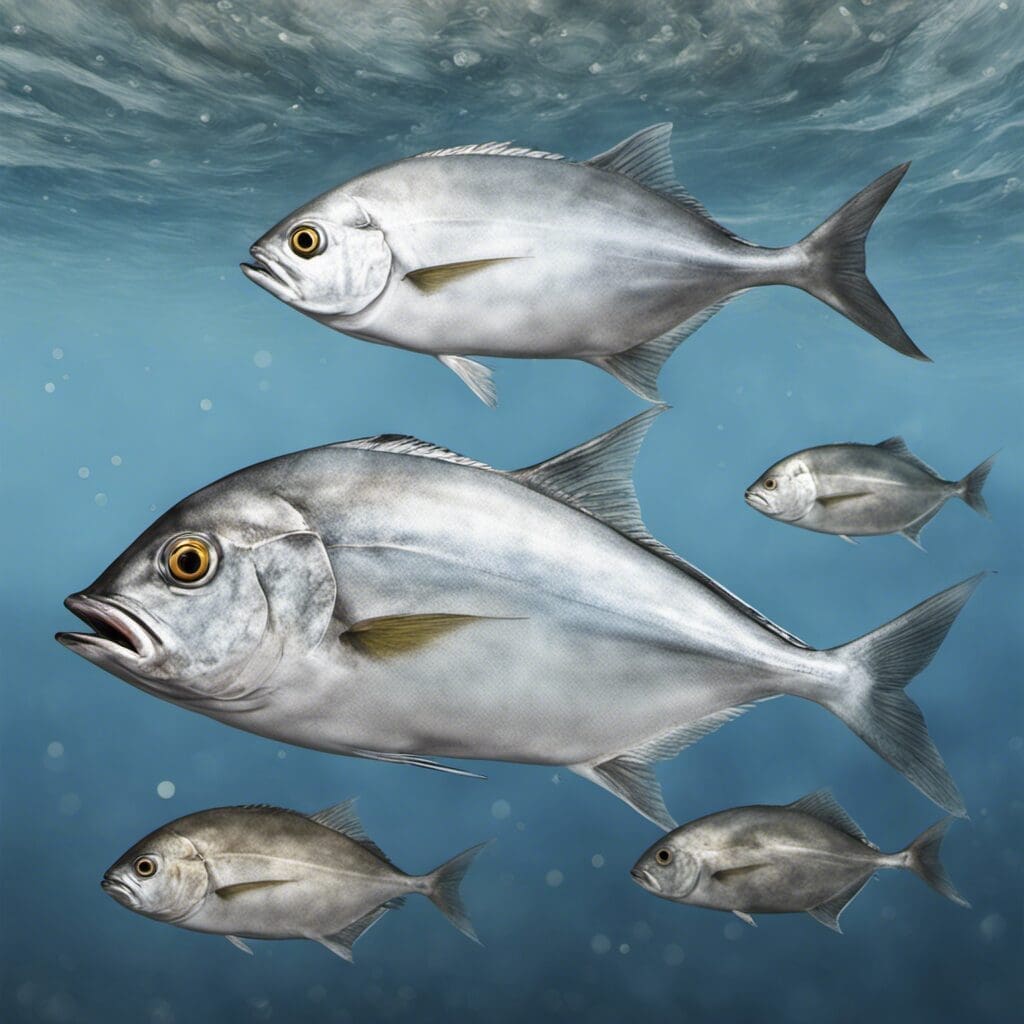Introduction
Species Name and Family Name
The Silver Trevally, also known as Pseudocaranx georgianus, belongs to the family Carangidae, which includes the jacks, jack mackerels, pompanos, runners, and scads.
Conservation Status
Current Status
Silver Trevally is not listed as endangered or vulnerable with the World Conservation Union (IUCN).
Conservation Efforts
Despite not being threatened, various measures have been put in place by different countries to regulate and manage the Silver Trevally fishery to ensure its sustainable exploitation. This includes bag limits and minimum size restrictions.
Statistics
| Aspect | Average | Range |
|---|---|---|
| Length | 42 cm | 20-90 cm |
| Weight | 72 kg | 30-100 kg |
| Average Lifespan | 25 Years | — |
Distribution
Regions/Countries
This species is widely distributed in the warm and temperate waters of the Pacific and Indian Oceans but is especially prevalent around Australia.
Migration Patterns
Mature Silver Trevally migrate towards the southern shores during the warmer months. Juvenile Silver Trevally, on the other hand, are known to occupy estuarine environments.
Habitats
Water types
Silver Trevally prefer saltwater environments including coastal bays and estuaries.
Depth Range
They can be found from the surface down to depths of 100 meters.
Temperature Range
They are most typically found in temperatures between 12-24°C.
When and Where to See
Seasonal Patterns
In Australia, they are usually found during the warmer months, primarily from March to May, when they migrate southward.
Time of Day
They feed during the day, specifically in the early morning or late afternoon.
How to Catch
Preferred Bait or Lures
A range of bait can be successful when catching Silver Trevally, from prawns, squid, cut fish, or soft plastic lures.
Fishing Techniques
Fly fishing, trolling, and bottom fishing techniques can all prove successful when fishing for Silver Trevally, with hook sizes 1/0 to 5/0 commonly used depending on the size of the fish targeted.
Best Fishing Locations
1. Adelaide, South Australia, Australia
2. Melbourne, Victoria, Australia
3. Tasmania, Australia
4. Esperance, Western Australia
5. Kiama, New South Wales, Australia
6. Sydney Harbour, Australia
7. Dampier Archipelago, Western Australia
8. Ningaloo Reef, Western Australia
9. Jervis Bay, New South Wales, Australia
10. Great Barrier Reef, Australia
Identification Guide
The Silver Trevally is a robust, deep-bodied species with a small to medium-sized head and large eyes. Its color can vary but is typically silver with a green-blue back.
Culinary
How to Cook and Taste Profile
Silver Trevally has a medium to high oil content which contributes to its rich flavor when cooked. It can be used in a variety of dishes, including grilling, frying, or smoked.
Nutritional Information
Silver Trevally is an excellent source of Omega 3, proteins, vitamins, and minerals.
Recipes
Popular recipes include Trevally fillets with chili, lime and coriander; baked Silver Trevally with tomatoes and olives; and Trevally ceviche.
Additional Information
Behavior
Silver Trevally are highly mobile schooling fish. They are known to eat a variety of prey, including other fish, crustaceans, and squid.
Predators and Threats
Natural predators of Silver Trevally are large fish and sharks. The biggest threat to these fish species is overfishing.
Cultural/Historical Significance
In Japan, Silver Trevally were traditionally considered sacred offerings to the gods and were adorned in temples.
References and Further Reading
1. “Silver Trevally” in Fishes of Australia. Available at: Fishes of Australia.
2. “Silver Trevally” in Australian Museum. Available at: Australian Museum

